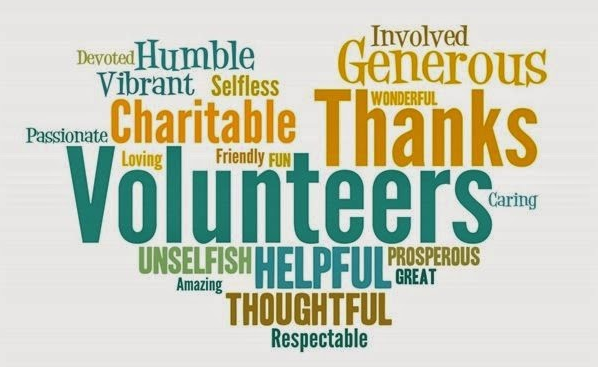The concept of altruism, which presupposes a personal benefit to the self which comes from the benefit of others, has always been apprehended as one of the key pillars of human morality and social interactions. It is evident from the simple charity done among neighbors to the large scale charity, from the fighting against certain causes such as cancer to relief efforts in different parts of the world; altruism is a strong force despite belonging to different groups. In the contemporary world characterized by technology, communication, globalization, social concern, and social media among others, new forms of connecting people are emerging, and hence altruism is shifting in new platforms. Of course, simple good deeds are as popular as ever, though the new world and new social initiatives have defined the concept of the altruism.
The term altruism comes from both biology and philosophy; the term itself has philosophical roots. From a biological point of view, altruism is typically analyzed with the help of evolutionary patterns that explain that self sacrificing conduct contributes to the preservation of a certain species. For example in the familial or communal types love, cooperation, sharing of foods and defending one another are group enhancing behaviors. This can be observed in people and observed in animals for that matter or when members of a community take time to care for others’ young ones or when hunting.
Ethically, altruism has been approached with regard to a moral obligation or a value. Comte also kick started the debate on altruism when he named it in the 19th century as being a key component to the moral civilizing of man. It is people’s selfishness and the pleasure they seek that brings forth a rationale for people to live for the sake of others. In the same way, religious scriptures of most faiths, starting from Christianity’s exhortation to ‘love thy neighbour,” and Buddhism’s helping compassion also refer to the principle of selflessness.
However, in the contemporary society the principles of altruism are transforming its meaning. First of all it is necessary to mention that although self-sacrificial actions are still being motivated by the purpose of helping others, their various types, reasons and effects depend on societal shifts.
As the advancement in technology brought about the digital generation, charity has not been left behind on how people and organizations perform it. Facebook, Indiegogo, and countless mobile apps that you can download in a single tap make it simpler for people to be kind than ever before no matter where they are.
One of the trends relevant to the given context is called ‘hashtag activism. ’ The examples of social media campaigns include #BlackLivesMatter, #MeToo, and #ClimateStrike that have attracted millions of people from across the world to promote social justice, gender equality, and environmentalism. Where some people previously fought as subcultures for specific causes, they have since become international campaigns, bringing together people, some of whom would have never ordinarily crossed path with each other. With this form of digital altruism, people give their time, particular efforts, and more by raising awareness, sharing useful resources and coming up with an event, all from the comforts of their homes.
Social media and crowd funding have changed altruism by way of examples like GoFundMe, Kickstarter, etc. Anyone requiring financiers regardless of reasons like; bills emergencies, tuition fees, surgeries, social causes, and many more, can now access a global crowd for funding. In many of these platforms have sought and secured fairly large amounts of money in a short span, thereby espousing the values of how technology can boost the rates of charitable funding.
However, there are questions that digital altruism has made easy for us to answer as well through digital options. For instance, there are critics who have challenged that mere pushing a button to ‘like,’ ‘share,’ on the social media diminish the meaning of true altruism. The question arises: It may be narrowed down to questioning whether the so called altruism is actually futile, does not require personal sacrifice but, for instance, can be as simple as signing a petition on the social media feed or retweeting a cause? This debate reveals the fact that even the present day altruism is a paradox because people’s motives can be complex and diverse.
Altruism is thus not uniformly motivated and globalized world today presents a unique environment full of challenges. Altruism in its broadest forms may be driven by empathy or the simple desire to help others, through giving way or volunteering, but new forms of monetary altruism is fulfilled through personal satisfaction, reputation and social standing.
Today it is difficult to distinguish between people’s genuine desire to help others and their desire for self-promotion through social networks. To be specific, people take part in the actual acts of philanthropy not only with an aim of assisting other persons but also to promote their image. This is seen in the increased popularity of so-called ‘influencers’ who engage in some forms of public philanthropy and post such on social media. Though these actions may still be of help to the needy persons, they also bring into light the issue of; is modern altruism real?
Various types of selfish motives have been advanced which can be summed up by the term ‘warm glow’ altruism, where the person is glad about the fact that they were able to help another person. In this regard, therefore, altruism is not a totally selfless endeavor because it leads to an emotional pay off. In the contemporary society, characterized by a high tempo and sometimes high levels of stress, the self-utility variables like increased happiness, reduced tensions and improved well-being that come from donating property to other people is enough incentive to promote this process.
Nonetheless, this does not take anything from modern altruism. Regardless of the reason, caring remains an evidence of inspiring message; people need it and it for sure changes the lives of others. Many a times it has been seen that due to advancement in technology, the spirit of helping others through charitable acts has spread among the masses.
These are the concepts we use when analyzing the measures taken by people within social movements. Altruism remains significant in present-day political activism endeavour, where the importantment of change is augmented by the shared responsibility that every society has towards the whole society. Traditionally activism related to societal causes and crusades like environmentalism, human right issues, and poverty eradication etc., have a strong element of activism drawn from the volunteers that are capable of giving time and energy to the noble causes they believe in.
For instance, the global mass environmentalism has witnessed increased self-initiated philanthropic actions of people making individual efforts in adopting environmentally friendly activities such as reduction of the emission of carbon dioxide, voluntarism in tree planting and championing policies that seek to combat climate change. It is evident that there is increased concern in the environment among the people especially the youths, because the world has become a global village. In this respect however, altruism is not only confined to helping other people around, but is also about the protection of environment for the creatures that are yet to inhabit this world.
In the same way, humanitarianism is the foundation of response to calamities for example disasters, wars, and diseases outbreaks. Today, many charitable organizations including Red Cross, Doctors Without Borders and the World Food Programme depend on volunteers and contributors to extend their vital aid to the needy. People, regardless of their race, religion and other differences come together and work towards assisting affected people in cases of calamities.
Modern altruism has emerged as a result of change in technology and social relations and it has the following challenges. But one fear is a process called ‘compassion fatigue’, which means that people get tired of news feeds filled with humanitarian catastrophes and charitable topics. Due to the sheer volume of global problems, people are likely to feel helpless in selecting the proper issues to try to address and may thus develop apathy.
Additionally the performative trends related to charity, that is when individuals show the desire to make charitable donations and take part in associated activities solely in order to gain public attention and admiration; the concept of altruism has been questioned in its real sense. Many a time’s people and organizations use altruism motives to benefit themselves or earn monetary profits and this erodes the essence of altruism.
Nevertheless, it is imperative to note that there are many more possibilities through which altruism will move onwards and upwards in the progress. Technological progress that has been observed in the recent past particularly in the areas of artificial intelligence and the blockchain presents possibilities though which charitable operation can be made more transparent and accountable. For instance, blockchain technology can be applied in tracking donations with precision and guarantee it gets to the rightful recipient while AI can assist in determining and satisfying global needs.
This fundamental urge for altruism is the driving force that still dominates the contemporary society and determines people’s actions for the benefit of every single subject in the society. The so called ‘new phonetics of altruism’ means that altruistic behavior has changed and is more closely linked to digital networks, but the reasons remain the same, namely, empathy, compassion and the desire to make the world a better place.
With the constant change of world societies, the role of altruism will also change giving way to new ways through which individuals and organizations can help also. It must also be mentioned that charity will continue to be an integral aspect of people’s lives regardless of the methods used in the form of online donation platforms or the “hands-on” charity initiatives.
(Author is Assistant Professor, Chandigarh University. Email: [email protected] [email protected])








